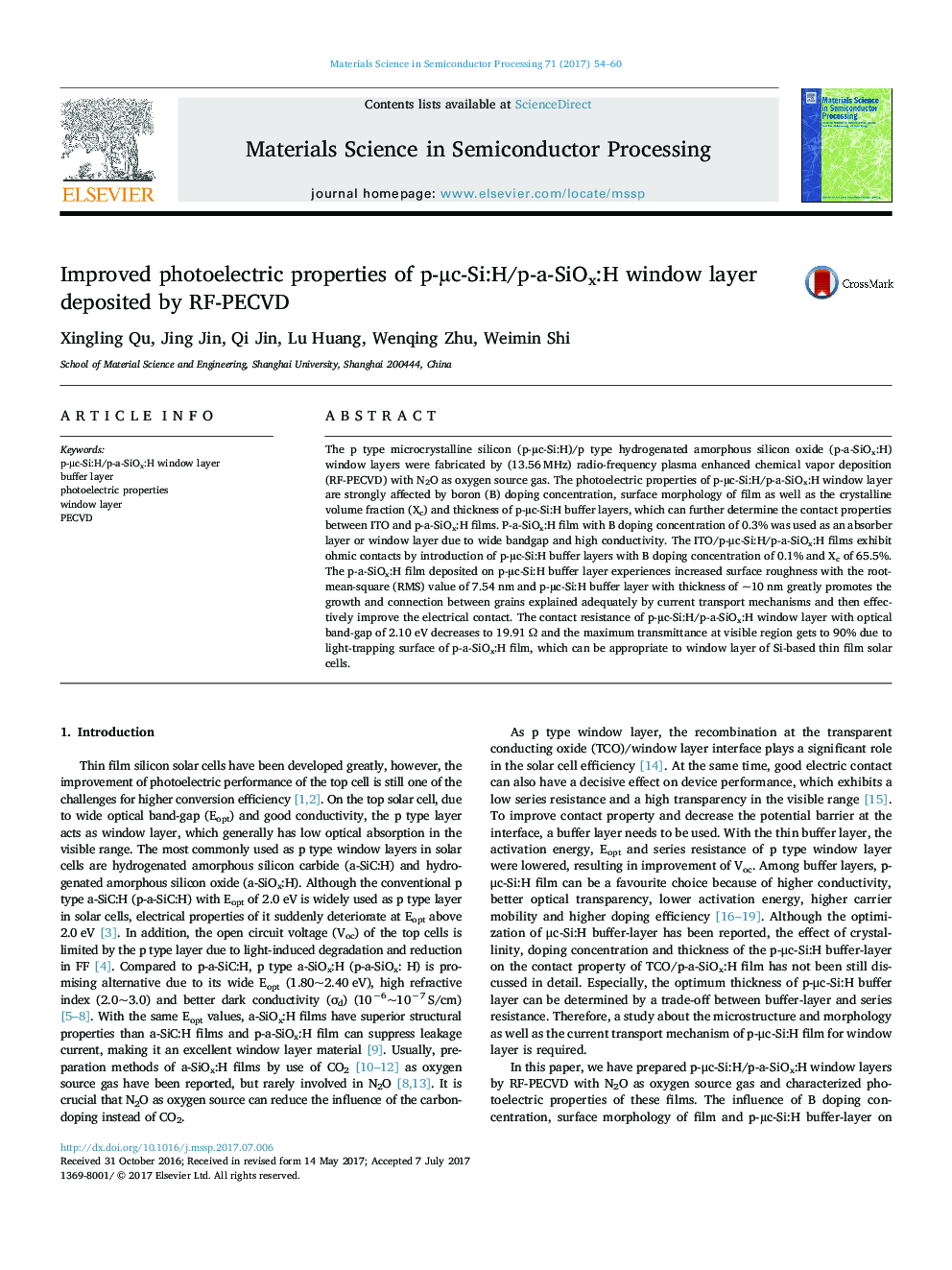| Article ID | Journal | Published Year | Pages | File Type |
|---|---|---|---|---|
| 5005803 | Materials Science in Semiconductor Processing | 2017 | 7 Pages |
Abstract
The p type microcrystalline silicon (p-µc-Si:H)/p type hydrogenated amorphous silicon oxide (p-a-SiOx:H) window layers were fabricated by (13.56 MHz) radio-frequency plasma enhanced chemical vapor deposition (RF-PECVD) with N2O as oxygen source gas. The photoelectric properties of p-µc-Si:H/p-a-SiOx:H window layer are strongly affected by boron (B) doping concentration, surface morphology of film as well as the crystalline volume fraction (Xc) and thickness of p-µc-Si:H buffer layers, which can further determine the contact properties between ITO and p-a-SiOx:H films. P-a-SiOx:H film with B doping concentration of 0.3% was used as an absorber layer or window layer due to wide bandgap and high conductivity. The ITO/p-μc-Si:H/p-a-SiOx:H films exhibit ohmic contacts by introduction of p-µc-Si:H buffer layers with B doping concentration of 0.1% and Xc of 65.5%. The p-a-SiOx:H film deposited on p-µc-Si:H buffer layer experiences increased surface roughness with the root-mean-square (RMS) value of 7.54 nm and p-µc-Si:H buffer layer with thickness of ~10 nm greatly promotes the growth and connection between grains explained adequately by current transport mechanisms and then effectively improve the electrical contact. The contact resistance of p-µc-Si:H/p-a-SiOx:H window layer with optical band-gap of 2.10 eV decreases to 19.91 Ω and the maximum transmittance at visible region gets to 90% due to light-trapping surface of p-a-SiOx:H film, which can be appropriate to window layer of Si-based thin film solar cells.
Related Topics
Physical Sciences and Engineering
Engineering
Electrical and Electronic Engineering
Authors
Xingling Qu, Jing Jin, Qi Jin, Lu Huang, Wenqing Zhu, Weimin Shi,
